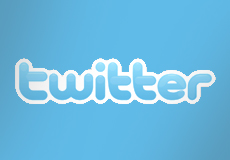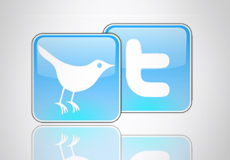By
David TobiaJanuary 28, 2013
Facebook’s new Graph Search feature may benefit from upcoming upgrades. When Graph Search was first released, the feature relied primarily on “likes” and check-ins to provide results, but these are ineffective tools since most people do not check-in when they go to places they like, and others like pages ironically rather than honestly. But bringing in further analysis of comments of posts could help improve the accuracy of Graph Search. Continue reading Facebook: Struggling Graph Search Feature May Be Improved
By
ETCentricJanuary 24, 2013
The use of second screen apps is on the rise and many companies are looking to not only capitalize on that growth, but to continue transforming the interactive viewing experience. Among them, TweetTV is trying to separate itself from the pack by offering a real-time social TV guide that serves as a one-size-fits-all solution across all devices. Continue reading TweetTV in Beta: Your Real-Time Interactive Social TV Guide
By
ETCentricJanuary 23, 2013
Employees sometimes take to Facebook and Twitter to discuss work-related matters — and employers usually don’t like that. But according to federal regulators, employers don’t have a say in the matter. In fact, regulators are passing down orders indicating employers have to scale back on policies that limit what their workers can say online. Continue reading Do Employees Have the Right to Discuss Work on Social Media?
By
ETCentricJanuary 22, 2013
Analytics provider Next Big Sound has released its State of Online Music report, which provides a detailed look at how social networks, streaming services, online radio and digital downloads are impacting the way consumers discover and share new music. Online growth was staggering in 2012 with a 45 percent increase in new plays, 67 percent increase in new fans and 6 percent increase in new profile views. Continue reading Next Big Sound Tracks Online Music Discovery and Sharing
By
ETCentricJanuary 21, 2013
Twitter has released the Twitter TV Book, a breakdown of tweet-based analytics of second screen viewers in the United Kingdom. The analysis includes details regarding user demographics, devices used, television program genres and tweeting habits. Twitter says about 60 percent of the UK’s 10 million active users tweet while watching television. Continue reading Twitter TV Book Examines Second Screen Tweeting in the UK
By
ETCentricJanuary 21, 2013
President Obama signed into law an amended version of the Video Piracy Protection Act, which will allow Netflix and other rental services to integrate viewing data with social media sites. Customers must consent to the shared data, which will share data related to watching, rating, and saving on platforms like Facebook and Twitter. Netflix hopes the integration will increase viewing hours and customer subscriptions. Continue reading VPPA Update Enables Netflix to Share User Data on Facebook
By
ETCentricJanuary 6, 2013
The second annual Year End Stats Report from social media intelligence platform Trendrr indicates that 2012 saw a major surge in social interaction involving TV programs, with significantly increased chatter across Twitter, Facebook and various social apps. Growing interest in social TV chatter was also evidenced by the recent Nielsen announcement to create the Nielsen Twitter TV Rating. Continue reading Report: Social TV Chatter Sees Dramatic Increase in 2012
By
emeadowsDecember 18, 2012



